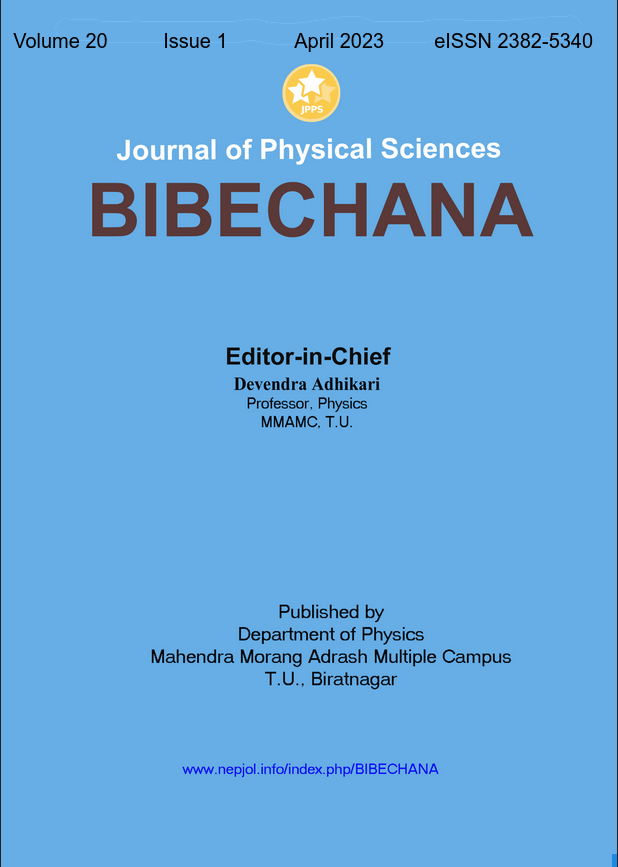Properties of dust in the North - East part of Perseus Cloud within the open cluster IC 348 using data from IRIS and AKARI
DOI:
https://doi.org/10.3126/bibechana.v20i1.49392Keywords:
Perseus Molecular Cloud, IC 348, IRIS, AKARI, Dust Color Temperature, Dust MassAbstract
In this work, we have studied the dust properties of the North-East part of Perseus cloud having a size of 0.5o × 0.5o located at RA (ICRS): 56.14o DEC (ICRS): +32.15o, within the Open Cluster IC 348, using IRIS and AKARI data. An isolated region of size 0.39o×0.23o in IRIS and 0.34o×0.16o in AKARI data is detected within it. The infrared fluxes extracted using Aladin v11.0 are used to study the dust temperature and dust mass. The distance of the selected dust structure is calculated using Gaia EDR3, which is 309.98 pc. The infrared flux density is found to be increased for long-wavelength data. The average dust color temperature calculated from short-wavelength IRIS data is more than that calculated from long-wavelength AKARI data, which are 26.34 K±0.11 K for IRIS and 17.63 K±0.02 K for AKARI data. The mass of dust within the entire dust structure is 0.06 Mʘ for IRIS data and 37.44 Mʘ for AKARI data. Jeans mass for isolated region gives contradictory results in two surveys, for IRIS survey total mass is smaller than Jeans mass but for AKARI survey the total mass is larger than the Jeans mass. A good correlation between infrared fluxes is noticed for linear regression. The study background sources observed from the SIMBAD database explore the large number of stars, X-ray sources, YSOs, etc., embedded within the dust structure; some of them are responsible for dust heating and some for the contribution of dust mass. The contour map shows the identical distribution between infrared fluxes, dust color temperature and Planck’s function and dissimilar distribution between dust mass and visual extinction in IRIS and AKARI data. The high temperature at the central region suggests that the core of dust structure is thermally active, radiating the large thermal radiation in comparison to the outer region.
Downloads
Downloads
Published
How to Cite
Issue
Section
License
Copyright (c) 2023 Surakshya Bhattarai, Madhu Sudan Paudel, Shiv Narayan Yadav, Ajay Kumar Jha

This work is licensed under a Creative Commons Attribution-NonCommercial 4.0 International License.
This license enables reusers to distribute, remix, adapt, and build upon the material in any medium or format for noncommercial purposes only, and only so long as attribution is given to the creator.




